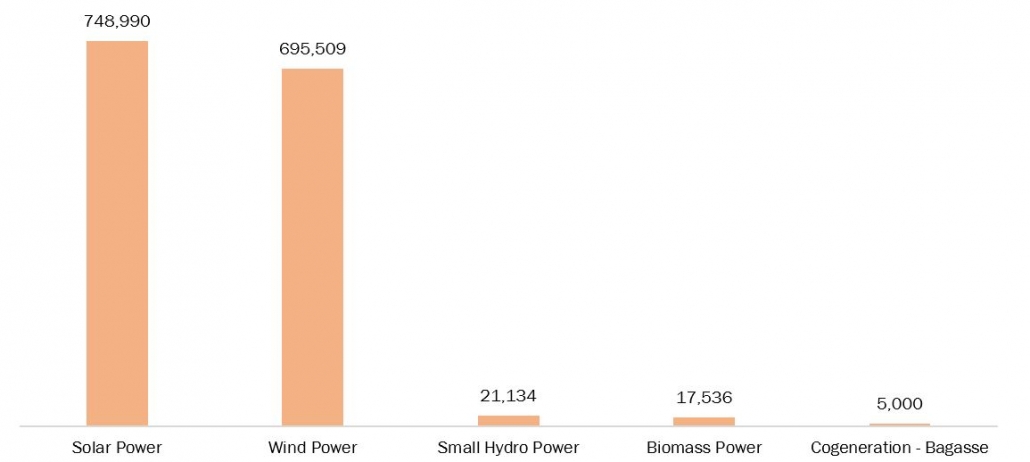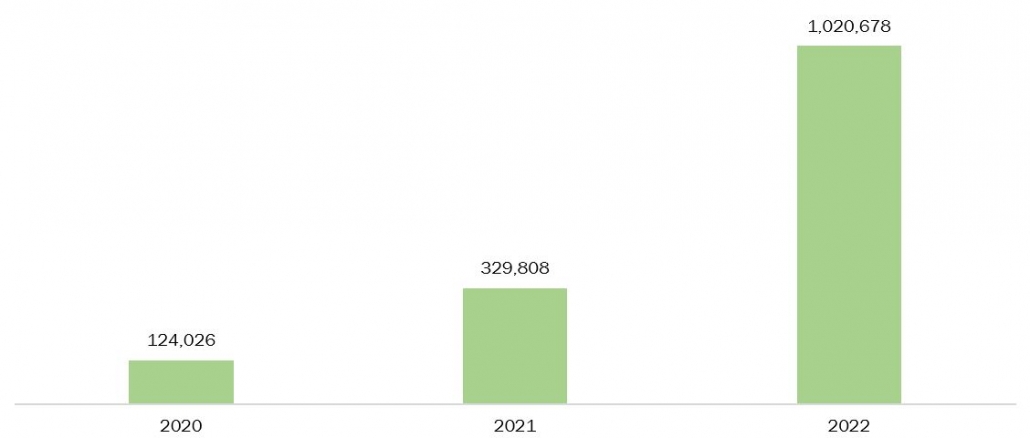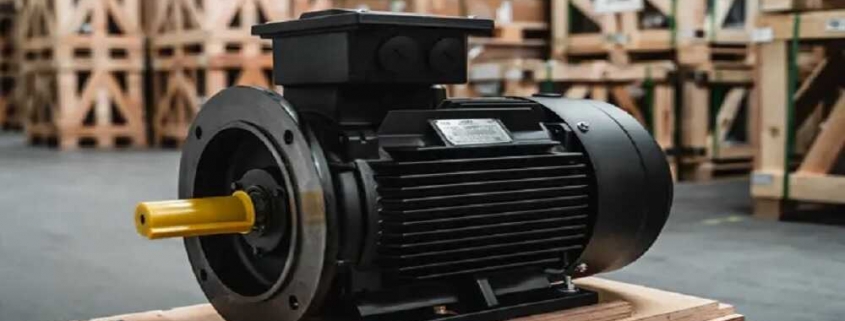Harnessing the Power of Induction Motors for Sustainable Energy Solutions
An induction motor works on the principle of electromagnetic induction, in which an alternating current is passed through coils wound around a stationary component called the stator, and a rotating magnetic field is generated within the motor. It is a type of alternating current (AC) electric motor used in various applications, such as household appliances and industrial machinery.
Induction motors have several qualities that make them widely used in many applications, such as reliability, ruggedness, and simplicity. A variety of induction motors are available based on different types and designs, including various sizes and power ratings to suit different requirements, squirrel cage and wound rotor designs, and single-phase and three-phase configurations.
Global Production Trends
The production of induction motors is growing with the rise in infrastructure development and industrialization across the globe in several emerging economies. The growth of industrialization can be seen most in the Asia Pacific region, with emerging economies like China and India, where production units are rapidly increasing with the launch of programs like Make in India by the Indian government, which is closely related to the need for induction motors for efficient production processes.
In recent years, there has been a notable increase in the regulations by the government for the need for energy efficiency to reduce harmful impacts on the environment. These regulations have driven several major manufacturers to switch to producing more energy-efficient and advanced induction motors. The regulations have also led to several major industries adopting these highly efficient induction motors in their production processes.
As technology advances across several industries, induction motor technology is also advancing with time by improving the motor design, materials, and manufacturing processes, which results in improved performance, reliability, and lifespan. Several advancements are made in induction motors such as the integration of smart technologies for predictive maintenance and condition monitoring, variable frequency drives or VFDs, and advanced control systems.
There is a significant increase in the adoption of renewable energy technologies across the globe with the growing need for energy efficiency and reduced footprint to save the environment. This includes several sources, such as wind and solar power, which have grown the demand for induction motors used in renewable energy systems and are commonly used in wind turbines and solar tracking systems due to their reliability and ability to operate in harsh environments.
The major growth in the automotive industry across several countries has also contributed to an increase in the demand for induction motors especially with recent growth in the popularity of EVs or electric vehicles. The growth in demand for EVs has influenced the production trends of induction motors proportionally as they are used in EV propulsion systems. For instance, in 2022, sales of EVs in Canada hit a six-month record, with nearly 56,000 units sold.
Induction Motors Use Case
The induction motors have several use cases that are boosting their production and market around the globe for their reliability, simplicity, and cost-effectiveness. The use cases include industrial applications where induction motors are used for their ability to operate in harsh environments, low maintenance, and robust construction and are used for conveyor systems, fans, compressors, driving pumps, and other machinery present in the industrial setting.
There is a growth of urbanization across several countries in emerging economies where there are a lot of new commercial buildings, industrial facilities, and residential complexes being constructed, and they all need Heating, Ventilation, and Air Conditioning (HVAC) systems. These HVAC systems use induction motors in the production process to power air handlers, blowers, and pumps and use their energy efficiency and reliability that contribute to the overall performance of HVAC systems.
These induction motors are used in EVs to offer high torque density, smooth operation, and reliability. They are also used in several household appliances such as washing machines, refrigerators, air conditioners, and kitchen exhaust fans to provide efficient and reliable operation, in wind turbines for electricity generation as they can face harsh environmental conditions, and in water treatment plants for processes such as filtration, sedimentation, and disinfection.
Moreover, in mining operations, the induction motor is significant as they drive equipment such as crushers, conveyors, and hoists and handle heavy loads that make them suitable for demanding mining environments, these are also used in the oil and gas industry to power pumps for crude oil extraction, pipeline transportation, and refining processes, they are used in drive machine tools such as lathes, milling machines, and grinders in manufacturing facilities, and used in agricultural equipment such as irrigation pumps, grain augers, and feed mixers as they provide increased productivity and efficiency.
Furthermore, renewable energy is being promoted globally and will help in the growth of induction motors as they are used in renewable energy production for electricity generation and for their ability to withstand harsh environmental conditions. For instance, according to the government of India, the estimated potential for renewable energy was around 14,90,723 MW from solar, wind, small hydro, and biomass renewable energy resources in 2022.
Figure 1: Segmentation of Potential for Renewable Energy in India (MW or Megawatts of Energy), 2022

Source: data.gov.in
Market Dynamics and Drivers
Several factors drive the induction motor market, including a rise in the application of Induction motors in several industries like automotive, mining, agriculture, energy, and several other industrial applications in recent times. The rise in demand for electric vehicles (EVs) with the growing amount of global environment awareness among the general public and several governments promoting energy efficient alternatives across the globe has contributed significantly to boosting the overall induction motor market.
The rapid growth in industrialization and urbanization in emerging economies and the developing markets in those regions has raised the need for induction motors. For instance, in Asia-Pacific, Latin America, and Africa, they have an increasing demand for induction motors, which is driven by industrial growth in the regions. The widespread adoption of induction motors is due to the cost-effective and reliable solutions they provide for a wide range of industrial applications. Therefore, with a rise in urbanization and industrialization in emerging economies, the induction motor market is anticipated to grow.
The development and innovation in induction motor technology to enhance efficiency across several industries is one of the growth factors in the induction motor market. There are several advancements made in induction motor technology, which attract a variety of industries to adopt them in the production process, such as advanced motor controls, sensor technology, and predictive maintenance systems. The need to replace the aging or inefficient motors with newer and more efficient induction motors also drives the induction motor market growth over the forecast period.
The popularity of electric vehicles will significantly drive the market growth of induction motors as they are used in EV propulsion systems and are used for high torque density and efficiency, which is suitable for the smooth operations of electric vehicles. Several countries have shown significant growth in EV sales in recent years. For instance, in India, the EVs registered in the year 2022 were 10,20,678, which is a significant increase from 2021, where the number of EVs registered was 3,29,808.
Figure 2: Year-Wise Number of Registrations for Electric Vehicles in India

Source: data.gov.in
Market Constraints
Despite the huge advantages and use cases of induction motors, the companies that manufacture them face a lot of challenges with significant improvements being made in motor technology like alternative motors, which makes it hard to keep up with that improving technology. Energy efficiency regulations around the globe are also increasing the demand for induction motors with higher efficiency ratings, and making such improvements in induction motors can increase manufacturing costs. Several problems, like raw material shortages, transportation delays, and geopolitical tensions, are anticipated to hinder the induction motor market growth over the forecast period.
Emerging Opportunities and Innovations
Despite the challenges, the induction motor market presents numerous opportunities for innovation and growth. Advances in its applications across various industries are the major reason for that. Also, the use of smart technologies, such as sensors, connectivity, and data analytics, in induction motors and innovations in motor design, such as advanced winding configurations, optimized magnetic circuits, and improved cooling techniques, are some of the factors that influence the market growth. The use of VSDs or variable speed drives that enable induction motors to operate at optimal speeds under varying load conditions will further enhance their productivity and efficiency.
Key Developments
- In March 2024, the International Electrotechnical Commission (IEC) published the first global standard to classify energy efficiency for high voltage or HV AC induction motors and defined four efficiency classes ranging from IE1 to IE4.
- In February 2024, ABB announced that the AMS 1250 6-pole synchronous motor achieved an impressive efficiency of 98.95%, which was very close to the world record of 99.05%.
- In September 2021, GM revealed new motors to power EVs or electric vehicles, providing 255-kW rear- and front-drive motors.
In conclusion, the induction motor market presents significant opportunities for growth and innovation, driven by the increasing popularity of electric vehicles and applications across various industries like renewable energies and the HVAC industry. While facing challenges such as growing advancements in motor technologies and huge investments needed to develop induction motor technology to make it more energy efficient, the industry is poised to capitalize on technological advancements and innovations to meet the needs of a growing global demand for induction motors.


